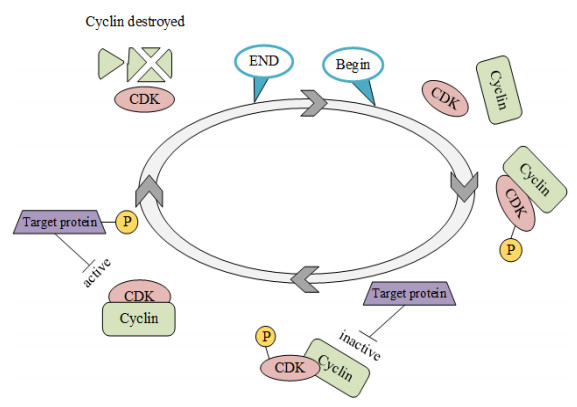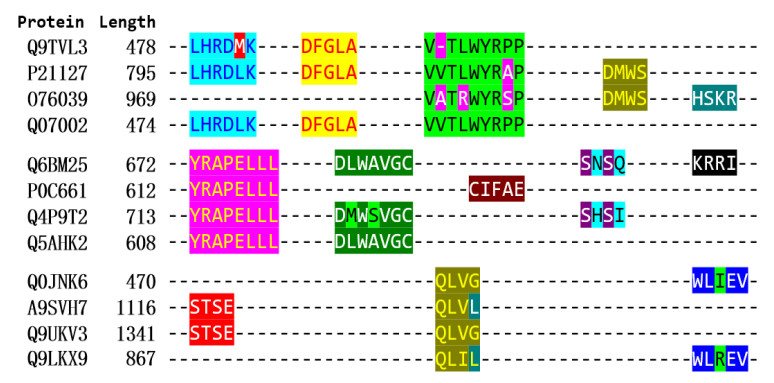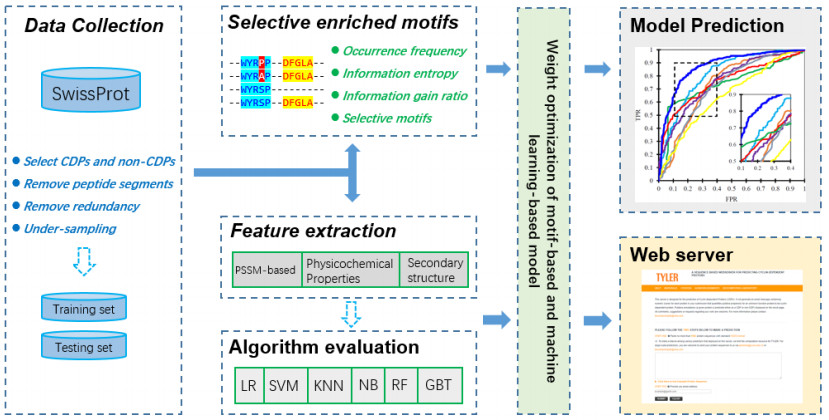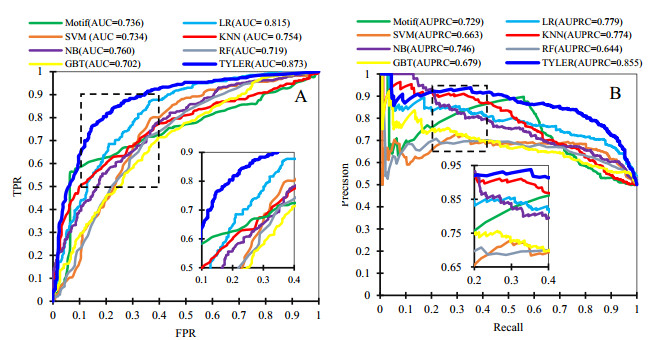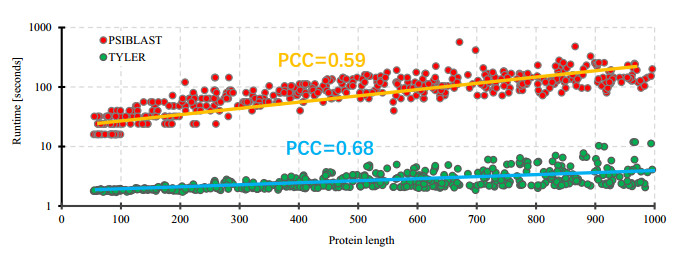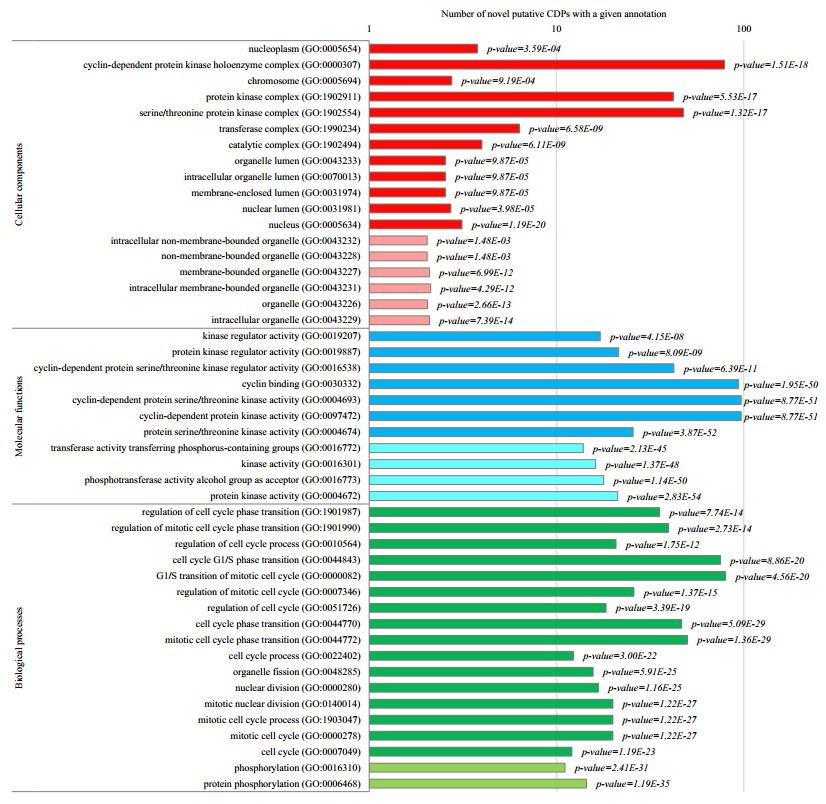|
[1]
|
S. Lim, P. Kaldis, Cdks, cyclins and CKIs: roles beyond cell cycle regulation, Development, 140 (2013), 3079-3093.
|
|
[2]
|
M. C. Horne, G. L. Goolsby, K. L. Donaldson, D. Tran, M. Neubauer, A. F. Wahl, Cyclin G1 and cyclin G2 comprise a new family of cyclins with contrasting tissue-specific and cell cycle-regulated expression, J. Biol. Chem., 271 (1996), 6050-6061. doi: 10.1074/jbc.271.11.6050

|
|
[3]
|
D. Fisher, Control of DNA replication by cyclin-dependent kinases in development, Results Probl. Cell Differ., 53 (2011), 201-217.
|
|
[4]
|
N. Bouftas, K. Wassmann, Cycling through mammalian meiosis: B-type cyclins in oocytes, Cell Cycle, 18 (2019), 1537-1548. doi: 10.1080/15384101.2019.1632139

|
|
[5]
|
G. Zheng, H. Yu, Cyclin a turns on bora to light the path to mitosis, Dev. Cell, 45 (2018), 542-543. doi: 10.1016/j.devcel.2018.05.017

|
|
[6]
|
A. W. Murray, Recycling the cell cycle: cyclins revisited, Cell, 116 (2004), 221-234. doi: 10.1016/S0092-8674(03)01080-8

|
|
[7]
|
D. W. Stacey, Cyclin D1 serves as a cell cycle regulatory switch in actively proliferating cells, Curr. Opin. Cell Biol., 15 (2003), 158-163. doi: 10.1016/S0955-0674(03)00008-5

|
|
[8]
|
D. J. Wood, J. A. Endicott, Structural insights into the functional diversity of the CDK-cyclin family, Open Biol., 8 (2018), 180112.
|
|
[9]
|
M. Örd, K. Möll, A. Agerova, R. Kivi, I. Faustova, R. Venta, et al., Multisite phosphorylation code of CDK, Nat. Struct. Mol. Biol., 26 (2019), 649-658.
|
|
[10]
|
P. Gutiérrez-Escribano, P. Nurse, A single cyclin-CDK complex is sufficient for both mitotic and meiotic progression in fission yeast, Nat. Commun., 6 (2015), 1-13.
|
|
[11]
|
C. Gérard, A. Goldbeter, From quiescence to proliferation: Cdk oscillations drive the mammalian cell cycle, Front. Physiol., 3 (2012), 413.
|
|
[12]
|
G. Bertoni, Cell cycle regulation by chlamydomonas cyclin-dependent protein kinases, Plant Cell, 30 (2018), 271.
|
|
[13]
|
M. Stamatakos, V. Palla, I. Karaiskos, K. Xiromeritis, I. Alexiou, I. Pateras, et al., Cell cyclins: triggering elements of cancer or not?, World J. Surg. Oncol., 8 (2010), 111.
|
|
[14]
|
L. C. Leal-Esteban, L. Fajas, Cell cycle regulators in cancer cell metabolism, Biochem. Biophys. Acta, Mol. Basis Dis., 1866 (2020), 165715.
|
|
[15]
|
E. A. Musgrove, C. E. Caldon, J. Barraclough, A. Stone, R. L. Sutherland, Cyclin D as a therapeutic target in cancer, Nat. Rev. Cancer, 11 (2011), 558-572. doi: 10.1038/nrc3090

|
|
[16]
|
Y. Geng, W. Michowski, J. M. Chick, Y. E. Wang, M. E. Jecrois, K. E. Sweeney, et al., Kinase-independent function of E-type cyclins in liver cancer, Proc. Nat. Acad. Sci. U. S. A., 115 (2018), 1015-1020.
|
|
[17]
|
R. V. Dross, P. J. Browning, J. C. Pelling, Do truncated cyclins contribute to aberrant cyclin expression in cancer?, Cell Cycle, 5 (2006): 472-477.
|
|
[18]
|
C. Sanchez-Martinez, L. M. Gelbert, M. J. Lallena, A. de Dios, Cyclin dependent kinase (CDK) inhibitors as anticancer drugs, Bioorg. Med. Chem. Lett., 25 (2015), 3420-3435.
|
|
[19]
|
W. Rozpędek, D. Pytel, A. Nowak-Zduńczyk, D. Lewko, R. Wojtczak, J. A. Diehl, et al., Breaking the DNA damage response via serine/threonine kinase inhibitors to improve cancer treatment. Curr. Med. Chem., 26 (2019), 1425-1445.
|
|
[20]
|
J. A. Diehl, Cycling to cancer with cyclin D1, Cancer Biol. Ther., 1 (2002), 226-231.
|
|
[21]
|
J. K. Kim, J. A. Diehl, Nuclear cyclin D1: an oncogenic driver in human cancer, J. Cell Physiol., 220 (2009), 292-296. doi: 10.1002/jcp.21791

|
|
[22]
|
M. K. Kalita, U. K. Nandal, A. Pattnaik, A. Sivalingam, G. Ramasamy, M. Kumar, CyclinPred: a SVM-based method for predicting cyclin protein sequences, PLoS One, 3 (2008), e2605.
|
|
[23]
|
H. Mohabatkar, Prediction of cyclin proteins using Chou's pseudo amino acid composition. Protein Pept. Lett., 17 (2010), 1207-1214.
|
|
[24]
|
Saxena, K. Pant, B. Pant, N. Adlakha, Hybrid based SVM model for prediction of CDKs and cyclins, in 2010 The 2nd International Conference on Computer and Automation Engineering (ICCAE), 5 (2010), 504-508.
|
|
[25]
|
J. Ramana, D. Gupta, Machine learning methods for prediction of CDK-inhibitors, Plos One, 5 (2010), e13357.
|
|
[26]
|
P. Loyer, J. H. Trembley, Roles of CDK/Cyclin complexes in transcription and pre-mRNA splicing: Cyclins L and CDK11 at the cross-roads of cell cycle and regulation of gene expression, Semin. Cell Dev. Biol., 107 (2020), 36-45. doi: 10.1016/j.semcdb.2020.04.016

|
|
[27]
|
S. Bandyopadhyay, S. Bhaduri, M. Örd, N. E. Davey, M. Loog, P. M. Pryciak, Comprehensive analysis of G1 cyclin docking motif sequences that control CDK regulatory potency in vivo, Curr. Biol., 30 (2020), 4454-4466. doi: 10.1016/j.cub.2020.08.099

|
|
[28]
|
D. Y. Takeda, J. A. Wohlschlegel, A. Dutta, A bipartite substrate recognition motif for cyclin-dependent kinases, J. Biol. Chem., 276 (2001), 1993-1997. doi: 10.1074/jbc.M005719200

|
|
[29]
|
J. A. Wohlschlegel, B. T. Dwyer, D. Y. Takeda, A. Dutta, Mutational analysis of the Cy motif from p21 reveals sequence degeneracy and specificity for different cyclin-dependent kinases, Mol. Cell. Biol., 21 (2001), 4868-4874. doi: 10.1128/MCB.21.15.4868-4874.2001

|
|
[30]
|
C. S. Gelais, S. H. Kim, V. V. Maksimova, O. Buzovetsky, K. M. Knecht, C. Shepard, et al., A cyclin-binding motif in human SAMHD1 is required for its HIV-1 restriction, dNTPase activity, tetramer formation, and efficient phosphorylation, J. Virol., 92 (2018), e01787-17.
|
|
[31]
|
D. J. Wood, J. A. Endicott, Structural insights into the functional diversity of the CDK-cyclin family, Open Biol., 8 (2018), 180112.
|
|
[32]
|
M. W. Landis, N. E. Brown, G. L. Baker, A. Shifrin, M. Das, Y. Geng, et al., The LxCxE pRb interaction domain of cyclin D1 is dispensable for murine development, Cancer Res., 67 (2007), 7613-7620.
|
|
[33]
|
I. Quilis, J. C. Igual, A comparative study of the degradation of yeast cyclins Cln1 and Cln2, FEBS Open Bio., 7 (2017), 74-87. doi: 10.1002/2211-5463.12157

|
|
[34]
|
M. Wei, Q. He, Z. Yang, Z. Wang, Q. Zhang, B. Liu, et al., Integrity of the LXXLL motif in Stat6 is required for the inhibition of breast cancer cell growth and enhancement of differentiation in the context of progesterone, BMC Cancer, 14 (2014), 1-17.
|
|
[35]
|
A. Bateman, UniProt: a worldwide hub of protein knowledge, Nucleic Acids Res., 47 (2019), D506-d515.
|
|
[36]
|
S. F. Altschul, T. L. Madden, A. A. Schäffer, J. Zhang, Z. Zhang, W. Miller, et al., Gapped BLAST and PSI-BLAST: a new generation of protein database search programs, Nucleic Acids Res., 25 (1997), 3389-3402.
|
|
[37]
|
C. E. Grant, T. L. Bailey, W. S. Noble, FIMO: scanning for occurrences of a given motif, Bioinformatics, 27 (2011), 1017-1018. doi: 10.1093/bioinformatics/btr064

|
|
[38]
|
M. U. Johansson, V. Zoete, O. Michielin, N. Guex, Defining and searching for structural motifs using DeepView/Swiss-PdbViewer, BMC Bioinf., 13 (2012), 1-11.
|
|
[39]
|
J. Zhang, H. Chai, G. Yang, Z. Ma, Prediction of bioluminescent proteins by using sequence-derived features and lineage-specific scheme, BMC Bioinf., 18 (2017), 1-13.
|
|
[40]
|
H. Chai, J. Zhang, Identification of mammalian enzymatic proteins based on sequence-derived features and species-specific scheme, IEEE Access, 6 (2018), 8452-8458. doi: 10.1109/ACCESS.2018.2798284

|
|
[41]
|
J. Zhang, H. Chai, S. Guo, H. Guo, Y. Li, High-throughput identification of mammalian secreted proteins using species-specific scheme and application to human proteome, Molecular, 23 (2018), 1448.
|
|
[42]
|
J. Zhang, Y. Zhang, Z. Ma, In-silico prediction of human secretory proteins in plasma based on discrete firefly optimization and application to Cancer biomarkers identification, Front. Genet., 10 (2019), 542.
|
|
[43]
|
K. V. Gunbin, V. V. Suslov, I. I. Turnaev, D. A. Afonnikov, N. A. Kolchanov, Molecular evolution of cyclin proteins in animals and fungi, BMC Evol. Biol., 11 (2011), 1-20. doi: 10.1186/1471-2148-11-1

|
|
[44]
|
J. Zhang, Y. Zhang, Y. Li, S. Guo, G. Yang, Identification of cancer biomarkers in human body fluids by using enhanced physicochemical-incorporated evolutionary conservation scheme, Curr. Trends Med. Chem., 20 (2020), 1888-1897. doi: 10.2174/1568026620666200710100743

|
|
[45]
|
X. Zhao, J. Zhang, Q. Ning, P. Sun, Z. Ma, M. Yin, Identification of protein pupylation sites using bi-profile Bayes feature extraction and ensemble learning, Math. Probl. Eng., 2013 (2013).
|
|
[46]
|
H. Chai, J. Zhang, G. Yang, Z. Ma, An evolution-based DNA-binding residue predictor using a dynamic query-driven learning scheme, Mol. BioSyst., 12 (2016), 3643-3650. doi: 10.1039/C6MB00626D

|
|
[47]
|
M. Hauser, M. Steinegger, J. Söding, MMseqs software suite for fast and deep clustering and searching of large protein sequence sets, Bioinformatics, 32 (2016), 1323-1330. doi: 10.1093/bioinformatics/btw006

|
|
[48]
|
L. Khalatbari, M. R. Kangavari, S. Hosseini, H. Yin, N. M. Cheung, MCP: a multi-component learning machine to predict protein secondary structure, Comput. Biol. Med., 110 (2019), 144-155. doi: 10.1016/j.compbiomed.2019.04.040

|
|
[49]
|
M. Malumbres, Cyclin-dependent kinases, Genome Biol., 15 (2014), 1-10.
|
|
[50]
|
C. Ratineau, M. W. Petry, H. Mutoh, A. B. Leiter, Cyclin D1 represses the basic helix-loop-helix transcription factor, BETA2/NeuroD, J. Biol. Chem., 277 (2002), 8847-8853.
|
|
[51]
|
U. K. Bhawal, F. Sato, Y. Arakawa, K. Fujimoto, T. Kawamoto, K. Tanimoto, et al., Basic helix‐loop‐helix transcription factor DEC1 negatively regulates cyclin D1, J. Pathol., 224 (2011), 420-429.
|
|
[52]
|
A. N. Pettitt, A two-sample Anderson-Darling rank statistic, Biometrika, 63 (1976), 161-168.
|
|
[53]
|
S. Siegel, Nonparametric statistics, Am. Stat., 11 (1957), 13-19.
|
|
[54]
|
J. Zhang, L. Kurgan, SCRIBER: accurate and partner type-specific prediction of protein-binding residues from proteins sequences, Bioinformatics, 35 (2019), i343-i353.
|
|
[55]
|
J. Zhang, Z. Ma, L. Kurgan, Comprehensive review and empirical analysis of hallmarks of DNA-, RNA-and protein-binding residues in protein chains, Briefings Bioinf., 20 (2019), 1250-1268.
|
|
[56]
|
G. Beliakov, G. Li, Improving the speed and stability of the k-nearest neighbors method, Pattern Recognit. Lett., 33 (2012), 1296-1301. doi: 10.1016/j.patrec.2012.02.016

|
|
[57]
|
D. A. Pisner, D. M. Schnyer, Support vector machine, in Machine Learning, (2020), 101-121.
|
|
[58]
|
T. Calders, S. Verwer, Three naive bayes approaches for discrimination-free classification, in Data Mining and Knowledge Discovery, 21 (2010), 277-292.
|
|
[59]
|
A. L. Boulesteix, S. Janitza, J. Kruppa, I. R. König, Overview of random forest methodology and practical guidance with emphasis on computational biology and bioinformatics, in Wiley Interdisciplinary Reviews: Data Mining and Knowledge Discovery, 2 (2012), 493-507.
|
|
[60]
|
Y. Zhang, X. Zhang, A. N. Lane, T. W. M. Fan, J. Liu, Inferring gene regulatory networks of metabolic enzymes using gradient boosted trees, in IEEE journal of biomedical and health informatics, 24 (2019), 1528-1536.
|
|
[61]
|
B. Jassal, L. Matthews, G. Viteri, C. Gong, P. Lorente, A. Fabregat, et al., The reactome pathway knowledgebase, Nucleic Acids Res., 48 (2020), D498-D503.
|
|
[62]
|
J. Mistry, S. Chuguransky, L. Williams, M. Qureshi, G. A.Salazar, E. L.Sonnhammer, et al., Pfam: The protein families database in 2021, Nucleic Acids Res., 49 (2021), D412-D419.
|
|
[63]
|
H. Mi, D. Ebert, A. Muruganujan, C. Mills, L. P. Albou, T. Mushayamaha, et al., PANTHER version 16: a revised family classification, tree-based classification tool, enhancer regions and extensive API, Nucleic Acids Res., 49 (2021), D394-D403.
|









 DownLoad:
DownLoad: 



